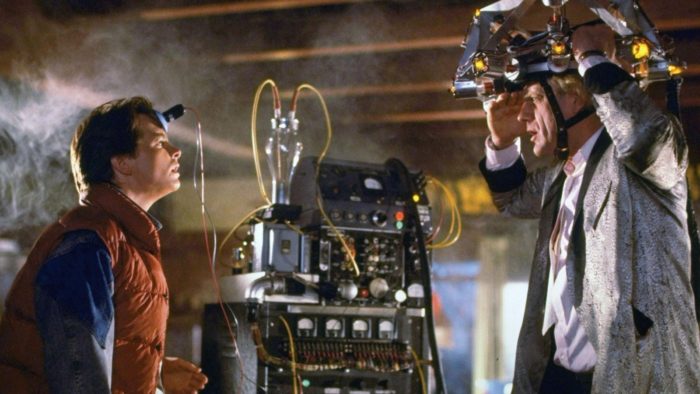Published in Bloomberg Prophets column on 28/2/2018. All opinions expressed are solely those of the author.
Currencies move around much more than they should. Country fundamentals – meaning purchasing power parities – change slowly over time, but financial markets respond to a variety of transient stimuli, including their own internal workings as money follows momentum. The trend is your friend until you get to the bend – and there is always a bend.
It would be nice to report that currencies revert to fundamentals over the medium term, but in the case of the yen-dollar rate that is definitely not the case. For most of the past half century, the yen has either been severely undervalued or severely overvalued. The consequence has been a highly destructive multi-decade boom-bust cycle that is now finally playing out.
For the first time in living memory, the yen is showing signs of stabilizing at somewhere close to fair value, as defined by the OECD’s calculation of purchasing power parity. If it stays there, that really would be the new normal – and a much healthier configuration for businesses and investors than what came before.
Currencies are inherently political and the yen-dollar rate reflects the twists and turns of the US-Japan relationship in modern times. That is why Japanese ministers of finance and other high officials feel obliged to give a running commemtary on the gyrations of the forex markets.
Under the Bretton Woods system of fixed exchange rates, the rate was fixed at 360 to the dollar. By the late 1960s, that represented a 40% undervaluation and a huge boost to Japanese competitiveness. Since the end of World War, Japan had effectively been an American protectorate and sponsoring its economic development made perfect sense for the U.S. in its face-off with the Soviet bloc.
The “Nixon shock” of 1971 spelt the end of the Bretton Woods regime. It was also the year in which Okinawa, a staging post for the Vietnam War, reverted to Japanese sovereignty. The yen surged but remained undervalued in PPP terms for most of the next 14 years. Meanwhile trade friction with Japan grew into an ugly political issue, especially in America’s manufacturing heartlands. A Chinese-American was murdered by laid-off auto workers on suspicion of being Japanese. Congressmen took a sledgehammer to a Toshiba boom-box on the steps of the Houses of Congress.
Such was the background to the enormous currency revaluation that Japan (and West Germany) had to swallow as a result of the Plaza Accord of September 1985. At its highest point, in 1995, the market level of the yen was more than double its PPP value – an astonishing level of stress for any economy to take.
The political atmosphere remained poisoned with trade frictions right through into the mid-1990s, when books claiming that Japan would overtake the U.S. in economic scale were still topping the bestseller lists in the U.S. Only with the emergence of the internet economy and clear evidence that Japan’s economic model was in serious trouble did what author Bill Emmott called “Japanophobia” abate. By then, the Cold War was long over and Japan’s value as an ally had evaporated. Rivalry was replaced by indifference.
The yen remained overvalued relative to PPP for the entire period from 1985 to 2013. Over time, the drivers changed. In the late 1980s, the key economic release that traders awaited with bated breath was the U.S. trade balance. In the 1990s, the “Soros chart” of relative growth in Japanese and American money supply seemed to have good explanatory power. For most of this century, the differential in the two countries’ long bond yields was a fairly reliable indicator. All worked well – until they didn’t.
The yen has also acquired the unwanted status of being a safe haven, along with gold and the Swiss Franc. If anything nasty happens in the world, such as a financial crisis or a surge in the VIX Index, the yen rises. Even if the nasty thing happens to Japan itself, as with triple disaster of earthquake, tsunami and nuclear meltdown, the yen goes stronger.
The rationale is that Japan is the world’s largest creditor nation, with net external assets equivalent to over 60% of GDP. Fear or necessity is likely to provoke repatriation of some of that capital. The gargantuan programme of quantitative easing unleashed by the Bank of Japan, has weakened the safe haven phenomenon but not destroyed it completely. However, with Governor Haruhiko Kuroda set to remain at the helm until 2023, any serious financial market turbulence would surely be met by another blast of unconventional monetary policy.
The strategic background also suggests that the age of the grossly overvalued yen is over. Japan is back in business as a valuable U.S. ally thanks to the emergence of an assertive China willing to challenge American presence in the region. Without a confident, successful Japan, containing China’s influence would be so much harder – as President Trump appears to have realised, despite his fiery rhetoric on the campaign trail. It would be in neither country’s interests for Japan to slide back into deflationary stagnation.
It’s a shocking thought, but the yen may just settle at somewhere close to fair value. That would be a disaster for currency traders, but great news for almost everybody else.

